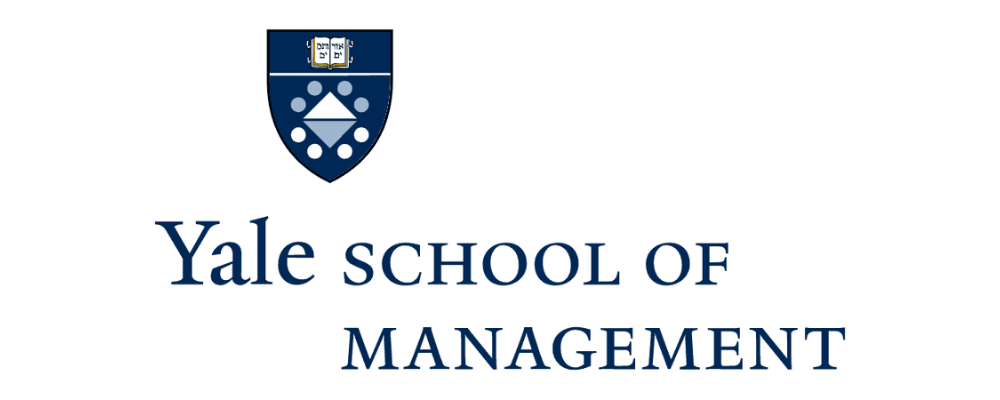
As Mark Twain might say, reports of the death of G-7 Russian oil price cap have been greatly exaggerated.
Devised by the U.S. Treasury Department and adopted by all the G-7 and European Union countries, the novel oil price cap was designed following Russia’s invasion of Ukraine to limit the price of Russian crude oil to $60 per barrel while simultaneously ensuring global market stability. Over the past several weeks, a flood of media and expert commentators have argued that the Russian oil price cap is effectively dead. One opinion piece in Bloomberg was unambiguous, titled: “It’s Time to Scrap the Russian Oil Price Cap.”
We helped advise the U.S. Treasury Department in setting up the oil price cap and strongly disagree. Sure, there is no question there has been some reduction in the efficacy of the price cap from when it worked so well at the start of this year, as Treasury Secretary Janet Yellen recently acknowledged and as leading economists from the Kyiv School of Economics helped expose.
The reasons why are hardly a secret. With global oil prices on the rise, and as U.S. policymakers have long expected, Russian President Vladimir Putin is becoming increasingly creative in devising ways to get around the price cap, including by building a Russian “shadow fleet” of ocean tankers that fall outside G-7 jurisdiction. As a result, since the summer, Russian energy revenues are up, and Russian oil is now trading closer to global oil prices—referred to as the Brent benchmark—than the price cap’s $60 ceiling.
The price cap worked very well for the first eight months of its implementation but now requires some rapid adjustments to enter a second phase. Here’s how it can still be made to work.
1. Focus on enforcement.
With global oil prices up around 30 percent since June, buyers are increasingly desperate to get their hands on oil however they can. Consequently, they are taking greater risks, and price cap evasion is increasing. That requires a regulatory focus on stricter enforcement, with clear public punishment of violators.
Research from top economists at the Kyiv School of Economics (KSE) suggests that there may be significant unpunished price cap evasion. The linchpin of the price cap has always been the middlemen—the G-7 and EU shippers and insurers who move Russian oil. These insurers, shipping companies, and shipowners are required to self-attest that they are not moving Russian oil priced above $60.
Yet although Russian oil is now trading at well above $60, European insurers and shippers, particularly from Greece but also Cyprus and Malta, remain deeply involved in moving Russian oil. KSE researchers recently found that half the oil being exported from Russia’s Pacific port of Kozmino is either shipped or insured by G-7 or EU companies—even though 96 percent of exports from Kozmino were priced above the $60 price cap.
Likewise, we reviewed data that suggests at least 40 percent of vessels still exporting crude oil from Russia’s Baltic ports were owned by G-7 or EU companies. In addition, satellite tracking systems have detected significant “spoofing”—ships turning off or manipulating their location-tracking transponders—as well as shadowy ship-to-ship transfers of Russian oil on the high seas to evade jurisdictional boundaries.
It is not too late to enforce regulations that ought to have been enforced long ago. The U.S. Treasury’s enforcement arm has issued already evasion warnings, but this is not enough. Both European regulators and U.S. Office of Foreign Assets Control should step up enforcement dramatically and publicly, and more severe punishment of violators is desperately needed, whether via fines, regulatory scrutiny, or revocation of licenses.
2. Continue leveraging the price cap to drive up Putin’s costs.
For all the focus on Putin’s increased revenues from higher oil prices, what is often missing from commentators’ analysis is the other side of the equation—that the G-7 price cap has already meaningfully increased Russia’s costs to drill and transport that oil. So even as Putin continues to sell oil to nonprice cap countries such as China and India, albeit at a significant discount, the price cap has cut meaningfully into his profits.
It is impossible to know exactly how much Russia is paying in the absence of key economic data that country has withheld, but we can arrive at a very rough, back-of-the-envelope approximation by considering just some of the many additional costs already imposed on Putin by the price cap:
- Since global transport companies largely refuse to touch Russian oil, shipping experts estimate Putin has had to add 600 ocean tankers to Russia’s shadow fleet in just one year, at a cost of at least $2.25 billion—a cost that is still rising as ships are retired and replaced. Russia exports around 1 billion barrels of crude oil annually, so this amounts to roughly $2 of additional expenses for every barrel of Russian crude oil exported.
- Whereas it took ocean tankers just two to seven days to reach European ports from Russian ports on the Baltic Sea, it takes around 35 days for Russian tankers to reach China and India, now the largest buyers of Russian oil. The average Russian oil tanker is now traveling more than three times the distance it used to, from an average 2,862 miles at the start of 2022 to 9,271 miles now. Each voyage costs at least $10 million more for an average sized tanker carrying about 150,000 tons of cargo, adding approximately $10 to the cost of every barrel of Russian oil exported.
- Since credible, fully capitalized insurers largely refuse to insure the Russian shadow fleet, those voyages need Russian-underwritten insurance. Assuming typical insurance premiums of about 5 percent of a ship’s cargo, including a “war-risk premium,” that amounts to approximately $4 million more in insurance costs per voyage, adding approximately $4 to the cost of every barrel of Russian oil exported.
- The exodus of more than 1,000 Western companies, including energy and oil field service companies, means that Russian energy companies have had to expend significant more in capital expenditures to keep their oil wells running. It’s impossible to say exactly how much, but oil giant Rosneft alone has spent nearly $10 billion more on capital expenditure over the last year by its own disclosure, which amounts to roughly $10 of additional expenses for every barrel of Russian oil exported.
- The price cap has forced Russia to expand and modify its port capacity. Again, no precise cost is possible, but for example, Russia is now building a new port for its Vostok oil project, increasing the planned capacity post-price cap and increasing expected costs to $120 billion from $100 billion pre-price cap, which amounts to at least $10 of additional expenses for every barrel of Russian oil exported.
We estimate these price cap-driven expenses add an extra roughly $36 per barrel in transaction costs, eating into the oil profits that Putin would have otherwise funneled toward funding his invasion of Ukraine, on top of the fact that Russia is already the least economical oil producer. According to Saudi Aramco, the fiscal breakeven for drilling Russian oil is a whopping $44 per barrel, twice as much as the cost of Saudi Arabia, United Arab Emirates, Iran, and other major oil producers.
So between his elevated breakeven cost of $44 per barrel to drill oil and price-cap driven expenses of $36 per barrel to get that oil to market, Putin might not draw much profits until Russian oil prices surpass $80 per barrel. Unfortunately for Putin, even though Russian oil prices have increased, they still trade at a meaningful discount to global oil benchmarks, with Russian Urals oil trading at around $15 less than Brent and Russian ESPO oil trading at around $7 less than Brent, suggesting that Putin is hardly swimming in excess profits with Russian oil selling around $80. Russian Urals is the benchmark for Russian oil traded from its western ports on the Baltic, while Russian ESPO is the benchmark for Russian oil sold to Asia via the Eastern Siberia — Pacific Ocean pipeline.
Stronger enforcement of the price cap will only add to these expenses and further erode Putin’s profit margin moving forward. Better that Putin fund tankers rather than tanks.
3. Impose novel sanctions and measures to plug regulatory gaps.
Putin has adapted to the price cap, and thus global policymakers need to adapt as well through the imposition of additional price cap-adjacent sanctions.
Novel sanctions proposals we have been pitching to global policymakers include: imposing financial penalties on sellers of oil tankers to Russia; sanctioning fly-by-night Russian insurance companies and shadow fleet shippers; leveraging certain geographic choke points for maritime oil trade, such as the Danish Straits which all Russian oil sent from Baltic ports must pass through; working with major Indian and Chinese ports to refuse to dock well-known problematic oil tankers; working with the intelligence community to continue to improve regulatory visibility into the maritime oil trade; and, as sanctions expert Eddie Fishman proposed, imposing full-blocking sanctions on key nodes in Russia’s energy trade, such as Rosneft and Gazprombank.
4. Continue driving down global oil prices.
One of the most underappreciated successes of the price cap has been its role in bringing down global oil prices while ensuring that the oil market remains amply supplied. The price cap, when working at its best, actually drives oil prices down, not up—since the costs of the price cap are entirely borne by Putin, not by global buyers, who benefit from increased bargaining leverage.
How does this work? Even countries that did not sign on to the price cap, such as China and India, are leveraging it to drive a hard bargain with Russia, with Russian oil trading at a persistent discount and some buyers securing discounts of up to $30 a barrel. Stronger, airtight enforcement of the price cap would further solidify the strength of this de facto buyer’s cartel. Similarly, the costs of additional price cap-adjacent sanctions would be borne by Putin.
To be sure, the price cap is only one policy tool of many to bring down global oil prices—and one that pales in comparison to the potential sweeping bilateral agreement between Saudi Arabia and the United States being hammered out right now, which might include Israeli normalization, civilian nuclear assistance, and new security guarantees on top of potential increases in oil supply from Saudi Arabia. Nevertheless, a more airtight oil price cap can play a role in delivering on U.S. President Joe Biden’s promise to “get those prices down again.”
“The Yale School of Management is the graduate business school of Yale University, a private research university in New Haven, Connecticut.”
Please visit the firm link to site




